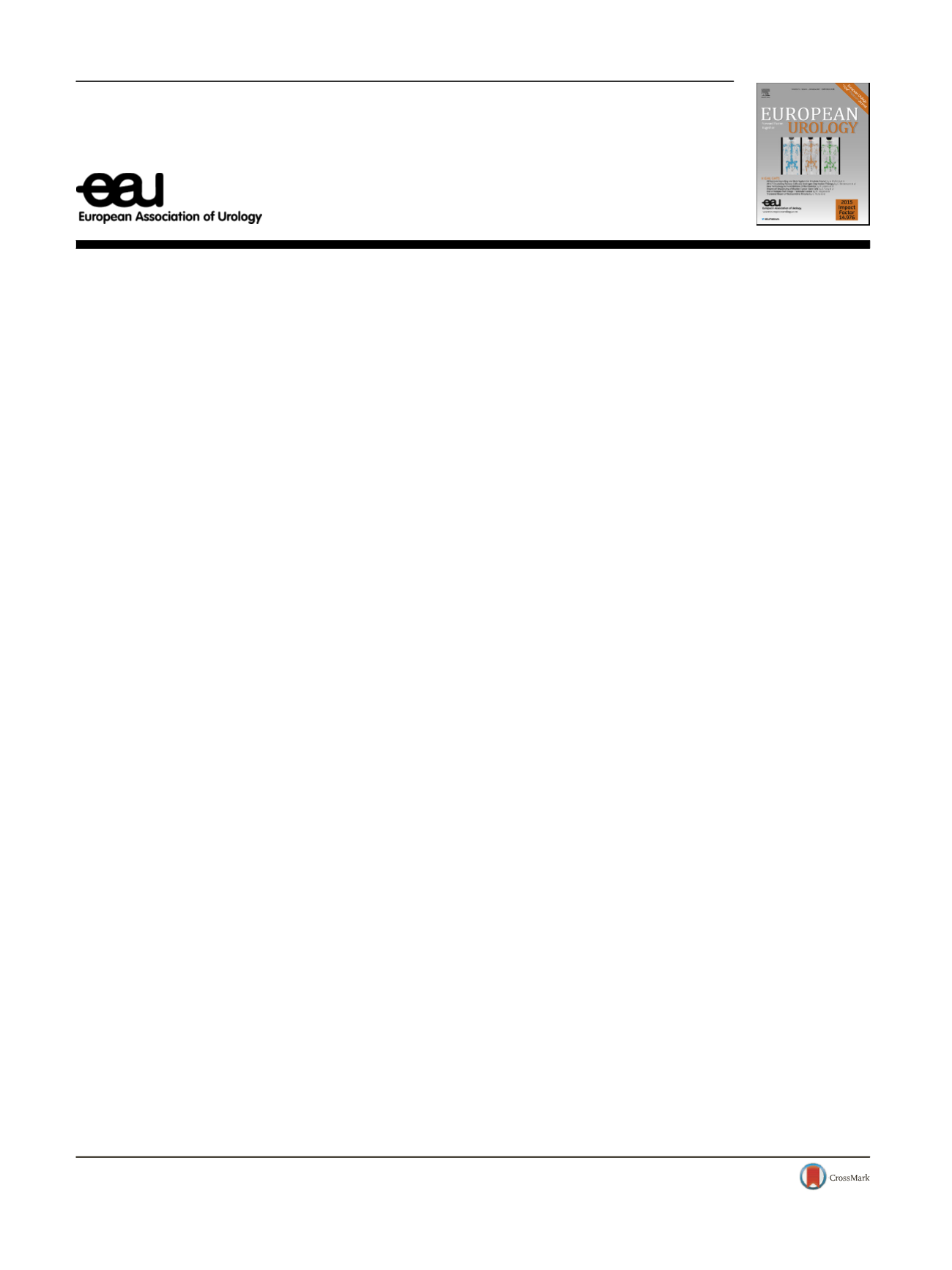

Letter to the Editor
Reply to Parham Habibzadeh and Farrokh Habibzadeh's
Letter to the Editor re: Eric A. Klein, Arnon Chait,
Jason M. Hafron, et al. The Single-parameter, Structure-
based IsoPSA Assay Demonstrates Improved Diagnostic
Accuracy for Detection of Any Prostate Cancer and
High-grade Prostate Cancer Compared to a
Concentration-based Assay of Total Prostate-specific
Antigen: A Preliminary Report. Eur Urol 2017;72:942
–
9.
The Most Appropriate IsoPSA Cutoff for Diagnosis of
Prostate Cancer
The authors appreciate the
[1_TD$DIFF]
careful analysis of results from
our manuscript
[1]regarding the selection of an optimal
operating cut-off point based on economic analysis.
Habibzadeh and Habibzadeh proposed optimizing an
equation combining specificity/sensitivity pairs from re-
ceiver operating characteristic analysis with pretest proba-
bility (prevalence), and with the relative cost of a false
negative to false positive. They further estimated the
optimal operating points from our plotted receiver operat-
ing characteristic curves and the reported prevalence for
several cost ratio scenarios. Utilization of such analysis is,
however, more difficult in practice since prevalence
and cost ratio are, as properly noted by Habibzadeh and
Habibzadeh, widely varying parameters that are functions
of test utilization, indications, geography, health care
system, and societal considerations, etc.
Therefore, while we agree with both the purpose and
analysis results by Habibzadeh and Habibzadeh, we believe
that in practice, until quantitative evaluation of cost ratio is
available and specific for each country, population, health
care system practices, and even individual preferences, it
would be difficult at best to implement in current clinical
practice. Furthermore, in our experience, even the variations
in individual preferences alone are so large, depending on
age, comorbidity, actual expense to the patient, etc., negating
use of anything more complicated than simple
[2_TD$DIFF]
reporting of
negative
[3_TD$DIFF]
predictive value, for example, to the clinician and to
the patient to make individual specific informed decisions.
We believe that reporting results
[2_TD$DIFF]
as negative
[3_TD$DIFF]
predictive
value using easy to comprehend language such as
“
your
IsoPSA test score corresponds to the exclusion value of 95%,
meaning that 95% of the patients with your test score or
below did not have cancer (or did not have high risk cancer,
etc.)
”
is arguably the best way to disseminate information to
the patient and his physician. This reporting style could then
be followed by a discussion between the patient and his
physician to determine the best course of action, considering
both quantifiable economic and less tangible parameters
unique to each case.
Conflicts of interest:
Eric A. Klein is employed by Cleveland Clinic, which
has an equity position in Cleveland Diagnostics; however, he has no
direct or indirect personal
fi
nancial interests in the company.
Reference
[1]
Klein EA, Chait A, Hafron JM, et al. The single-parameter, structure- based IsoPSA assay demonstrates improved diagnostic accuracy for detection of any prostate cancer and high-grade prostate cancer compared to a concentration-based assay of total prostate-speci fi c antigen: a preliminary report. Eur Urol 2017;72:942 – 9.
Eric A. Klein*
Cleveland Clinic Foundation, Glickman Urologic and Kidney Institute,
Cleveland, OH, USA
*Cleveland Clinic Foundation, Glickman Urologic and Kidney Institute,
Q10 9500 Euclid Avenue, Cleveland, OH 44195, USA. Tel. +12164445601.
E-mail address:
kleine@ccf.org .July 17, 2017
E U R O P E A N U R O L O GY 7 2 ( 2 0 17 ) e 174available at
www.scienced irect.comjournal homepage:
www.europeanurology.comDOIs of original articles:
http://dx.doi.org/10.1016/j.eururo.2017.06.028,
http://dx.doi.org/10.1016/j.eururo.2017.03.025.
http://dx.doi.org/10.1016/j.eururo.2017.07.0200302-2838/© 2017 European Association of Urology. Published by Elsevier B.V. All rights reserved.
















